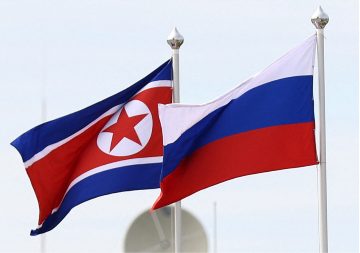The changing world order in the post cold war era has heralded the rise of economic globalization which has been dominated by the desire for symbiotic cooperation and economic intercourse between states. The level of increasing inter-dependence is not restricted to economic matters but also in facing mutual challenges in the maritime domain. These security challenges have been enhanced over time due the associated rise in sea borne trade especially with respect to the Indian Ocean region.
These emerging security challenges and rise in maritime crime , call for effective law enforcement and the maintenance of maritime order in generic terms by all littorals in the IOR (Indian Ocean Region) in tandem or in close cooperation. Unfortunately the nature of regional diversity coupled to diverse approaches towards maritime governance with a difference in priorities (Hierarchy of Relevance ) has lead to lack of enforcement and hence an alarming rise in maritime crime against commercial shipping.
SLOCs and their importance
In the globalised world of today, 80% of world trade is conducted through the seas with most of ships passing through the SLOCs (Sea Lines of Communication) . According to a World Bank projection, the global sea-borne trade was pegged at 21,480 billion ton-miles in 1999 was expected to rise to 41,800 billion ton-miles in 2014. However the economic downturn in 2008-09 played havoc and the boom experienced over the past few years – is projected to fall sharply Experts at Fearnleys, a leading shipbroker, expect world seaborne trade to have fallen by 1.4 per cent in 2009, before turning around and growing at a slower rate of 2% in 2010. Meanwhile the Oil trade,( including crude and oil products) is expected to remain at practically the same level as 2008.
Around 100,000 ships transit the expanse of the Indian Ocean annually. Roughly 40% of this sea-borne trade is accounted for by the Straits of Malacca. Every day 15.5 million barrels of oil, or 40% of the entire global oil trade passes through the Straits of Hormuz and 11 million barrels of oil pass through the Malacca and Singapore Straits
In this context the spiraling demand for energy from the "energy demand heartland” of Asia comprising of states like India, China and Japan has led to an inevitable and enhanced sensitivity to the security of the SLOCs and the choke points of the region. These countries view SLOCs as their very lifelines. After all, at current levels of consumption the oil import dependence of India is expected to rise to 91.6% by 2020. In the case of China it will be 76.9% while for rest of South Asia it will be 96.1% . India with nearly 89% of its oil imports coming by the sea route it is but inevitable that the SLOCs be secure from interdiction
Primary Maritime Challenges
The current geo political scenario – has spawned the rise of asymmetric challenges in the maritime sphere. Such challenges can easily effect the free flow of sea borne trade by its enhanced risk factor which in turn can have serious indirect impact in the form of rising insurance premiums and ultimately on the economic well being of a nation. An overview of these challenges is
Piracy
One of the most serious transnational crimes that seems to have made considerable impact on commercial shipping . In addition to the direct impact on ships, crews and cargoes, on the maritime industry and governments, piracy threatens global seaborne trade
Earlier piracy in the Indian ocean was rife in the Malacca straits and in Indonesian waters, however multi pronged efforts in form of coordinated anti piracy patrols (both from sea and air eg MALSINDO , Eyes in the sky) along with multi lateral initiatives like the ReCAAP (Regional Cooperation Agreement on Combating Piracy and Armed Robbery or the Tokyo Agreement of Nov 11 2004) along with awareness programmes - finally bore fruit leading to a drastic reduction in the number of incidents in the region.
However this respite proved to be temporary since piracy from the Horn of Africa seems to have appeared with a vengeance. Having first made headlines in 2005 Somalian piracy has evolved considerably within a short period of time from relatively modest beginnings of attempting to collect “tax” from intruding ships to a well-established lucrative corporate industry, professing transnational characteristics. The Somalian pirates are now the façade and part of large, well-financed and organized criminal gangs with tribal affiliations based inland. The main aim of these pirates is to extract ransom money from shipping companies and hence the associated violence is relatively lesser than other types of piracy, but this aspect is slowly changing for the worse.
The number of incidents are supposedly shrinking but pirates are using increasingly sophisticated equipment which enables them to carry out attacks at phenomenal ranges from the Somalian coastline ( nearly 1150 nm away which is nearer to India than Somalia) with the help of mother ships. In addition they are also actively enhancing their linkages with terrorist organizations. It has now been established that the Somalian pirate groups interact extensively with the Al Qaida based in Yemen and Al Shabab based in Somalia mainly for logistic purposes.
The re-routing of ships to bypass the Gulf of Aden and the Suez canal and higher insurance premiums costs associated with the hiring of security personnel and the installation of deterrent equipment are hardly economic solutions in the longer run. Taking into account all cost factors, UNCTAD 2009 report estimates that re-routing 33 per cent of cargo via the Cape would cost ship-owners an additional $7.5 billion per annum. These costs will ultimately be passed on to shippers and consumers.
Ships that continue to traverse the Gulf of Aden and the Suez have to purchase coverage at $20,000 per ship per voyage (excluding injury, liability and ransom coverage), as compared with the $500 required a few years ago
In such atmospherics– the solutions to eradicating this scourge do not exclusively lie at sea as is often perceived by most states and requires a multi pronged politico military approach rather than just a military one.
Maritime Terrorism
The international war on terrorism had taken a new dimension in the post 911 era while its maritime dimension has been highlighted post Mumbai blasts.
Earlier – since only 2-3% of all terrorist attacks were linked to the sea directly hence the issue of maritime terrorism was superficially looked at by security analysts and governmental bodies. However with the realization that that the Mumbai blasts was directly connected to the seas – especially as a supply route – the issue has come to the fore.
Meanwhile the US initiative of searching for terrorists and their personification in Al Qaeda continues on land, as well as at sea with the international coalition (mainly Task Force 150) on the look out for Bin Laden’s terror ships termed as the ‘phantom fleet’ The main idea being to prevent the Al Qaeda operatives from escaping or using the sea route.
As has been well known maritime terrorism can manifest itself in many dimensions. The linkages and the full import of "container security" to maritime terrorism was only realized now after it was reported in January 2002 that the search of a freighter by US naval forces nearly yielded a group of Al Qaeda terrorists who had been hiding inside a well equipped shipping container.
With a dramatic increase in large (i.e more than 6000 TEU-Twenty Foot Equivalent Units capacity) and small container transport by sea the problem has become accentuated as these sealed containers often passed through ports without thorough checking and are capable of containing anything from human terrorist cargo to arms and ammunition. However with the realization of initiatives such as Container Security Initiative (CSI) and making ports ISPS compliant – considerable headway has been made in overcoming the security problems associated with container security but robust shield is still a long way off.
Associated with the terrorism problem is that many of the phantom fleets fly the Flags of Convenience (FOC) making them difficult to track as they routinely change names and registry. FOCs- though they are common in the shipping world - pose a major challenge to maritime security. It is estimated that there are about 30 such registries (some in private hands) mainly run by small islands or impoverished nations
The Rise of Nacro- Terrorism/ terror crime nexus
An important adjunct to maritime terrorism is drug trafficking. With profit margins running into hundreds of percent, drug trafficking is by far the most lucrative way of generating funds to fuel the ever growing terrorist activities and fuelling insurgencies and piracies around the region.
Contextually terrorist groups are often deeply linked with drug cartels. While this symbiotic relation provides established routes for drug and arms smuggling it also provides the terrorists with the logistical infrastructure to move resources according to their desires.
India lies in the pivot of the Golden triangle and the Golden crescent – the two infamous drug producing areas- and is used as a maritime transit point for either.
Maritime Pollution and Oil related Environmental Disasters
Oil related disasters at sea are the bane of not only environmentalists but mariners and security specialists equally. They can create havoc with the marine ecology as well as affect the free flow of trade and shipping. Ports and regions affected by such disasters have to be by passed by ships- leading to losses.
Regional Governments are presently deeply concerned with major oil spills or wrecks of oil tankers at narrow approaches to harbours and choke points since they can also seriously affect the flow of shipping traffic. Theoretically the traffic can be directed to other similar ports or routes but practical difficulties of jetties, storage capacity, and longer routing leads to a compounding of economic losses
Conclusion
Transnational security threats in the IOR have considerably enhanced in recent years and can have serious detrimental effect on flows of trade and commerce and even the developmental indices of a state. , Countering these threats requires consistent cooperation between the littorals and the associated maritime agencies.
Dr Probal Ghosh is a Senior Fellow at the Observer Research Foundation. He was instrumental in setting up of the maritime think tank National Maritime Foundation. He is also the Co Chairman of the CSCAP(Council for Security Cooperation in Asia Pacific Region) International Study Group on Naval Enhancement (Maritime issues)
Courtesy: Maritime Gateway, November 2010.
The views expressed above belong to the author(s). ORF research and analyses now available on Telegram! Click here to access our curated content — blogs, longforms and interviews.




 PREV
PREV

